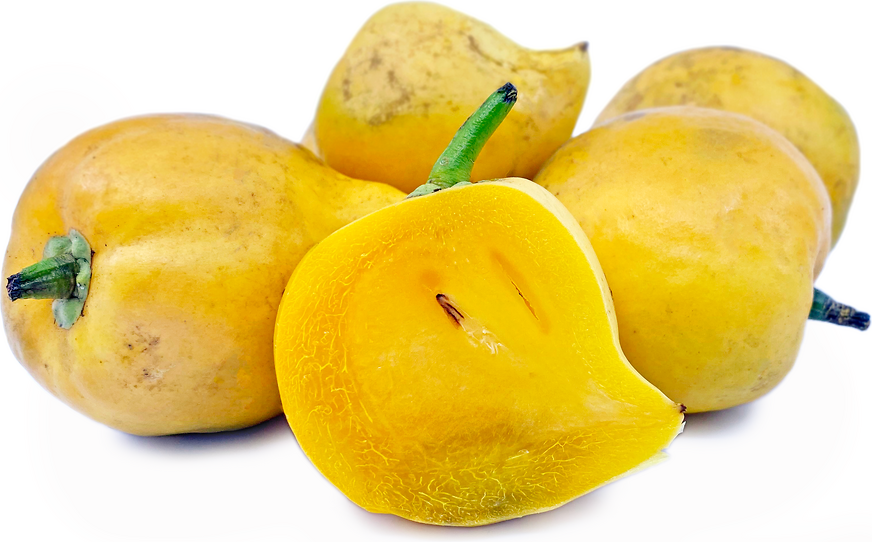


Gamboge Fruit
Estimated Inventory, lb : 0
Description/Taste
Gamboge fruits are small and round, averaging 6 to 9 centimeters in diameter, and have a globular shape with a small point protruding asymmetrically from the non-stem end. The skin is smooth, thin, and easily peeled, ripening from green to golden yellow when mature. Underneath the delicate skin, there is a yellow, fleshy layer that is soft and aqueous with a slippery consistency, surrounding a creamy and silky, central golden pulp with 1-4 dark brown, oval seeds. When pierced, the flesh emits a faint, tropical aroma. Gamboge is notably sour with subtle, sweet, and fruity notes when sampled in the center pulp surrounding the seeds. As the fruit is sampled closer to the skin, the sour flavor intensifies and develops a tarter and more acidic nature.
Seasons/Availability
Gamboge fruit is available in the late spring through summer.
Current Facts
Gamboge fruit, botanically classified as Garcinia xanthochymus, is a tart, tropical fruit that belongs to the Clusiaceae family. Also known as the Yellow mangosteen and False mangosteen, Gamboge fruits are native to humid, tropical forests of Southeast Asia and are favored for their sweet and sour flavor, popularly utilized in fresh applications. While the fruits are not commercially produced and are instead consumed on a local level, the garcinia tree is more famously known for a resin that is extracted and used as a natural dye and pigment.
Nutritional Value
Gamboge fruit is an excellent source of vitamin C and contains a phytonutrient called xanthone, which is a powerful antioxidant. The fruit also contains dietary fiber and small amounts of vitamin A, iron, and calcium.
Applications
Gamboge fruits are best suited for both raw and cooked applications, such as simmering and boiling. The fruit can be peeled, the seeds removed, and the pulp consumed fresh, or it can be blended into a tangy drink. The flesh can also be used to make sherbet, fermented into wine, or used to make vinegar and teas. In addition to fresh preparations, the pulp can be cooked into jams or chutneys, and in India, the fruit is often used as a substitute for tamarind in curries. Gamboge fruits pair well with meats such as grilled fish, pork, beef, and poultry, other tropical fruits, beans, potatoes, and rice. Fresh Gamboge will keep up to one week when stored in the refrigerator. It can also be dried for extended use.
Ethnic/Cultural Info
The term “gamboge” is also used to describe a resin extracted from the bark of the Garcinia tree. It is used as a premium yellow dye for textiles and paint. At one time, it was used to dye the robes of Theravada Buddhist monks and is still used to dye silks and other materials. The trees of the Gamboge fruit are only one of several species used for this pigment, some more intensely colored than others. The substance was first introduced to the United States in the late 1800s and was referred to as Siam Gamboge. Siam is the former name for Thailand.
Geography/History
Gamboge fruits are native to Southeast Asia, more specifically, the tropical countries bordering the Bay of Bengal, including Southern India, Malaysia, Thailand, Myanmar, and Cambodia. The tree has also been introduced to the Cook Islands in the South Pacific, Florida in the United States, and grows in the sub-tropical regions of Australia. Gamboge fruits are most likely to be spotted in Southeast Asia at local markets and on rare occasions through specialty growers in the sub-tropical United States and Australia.




